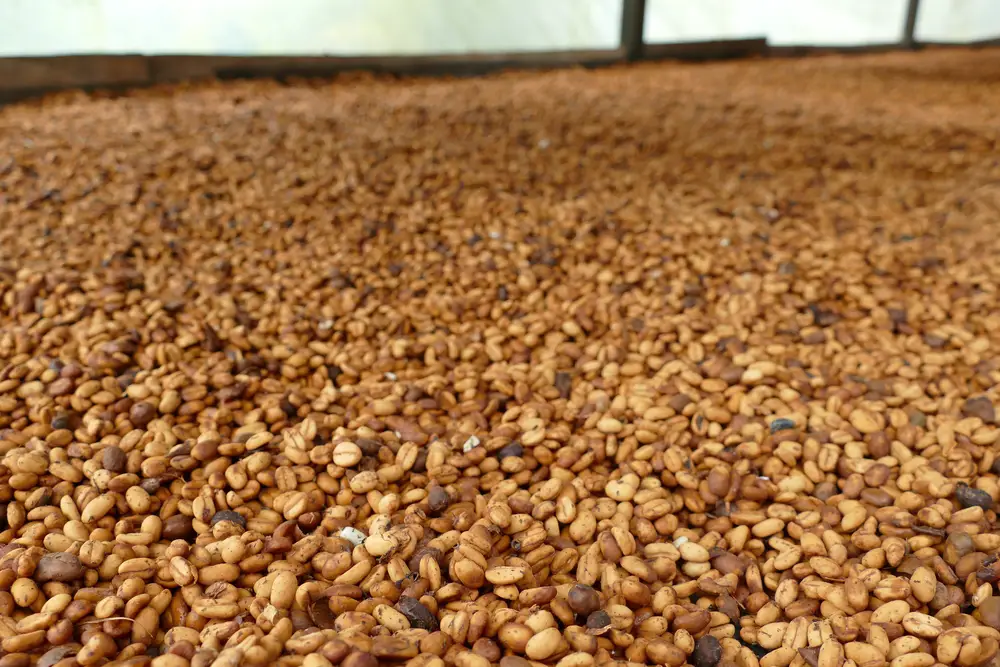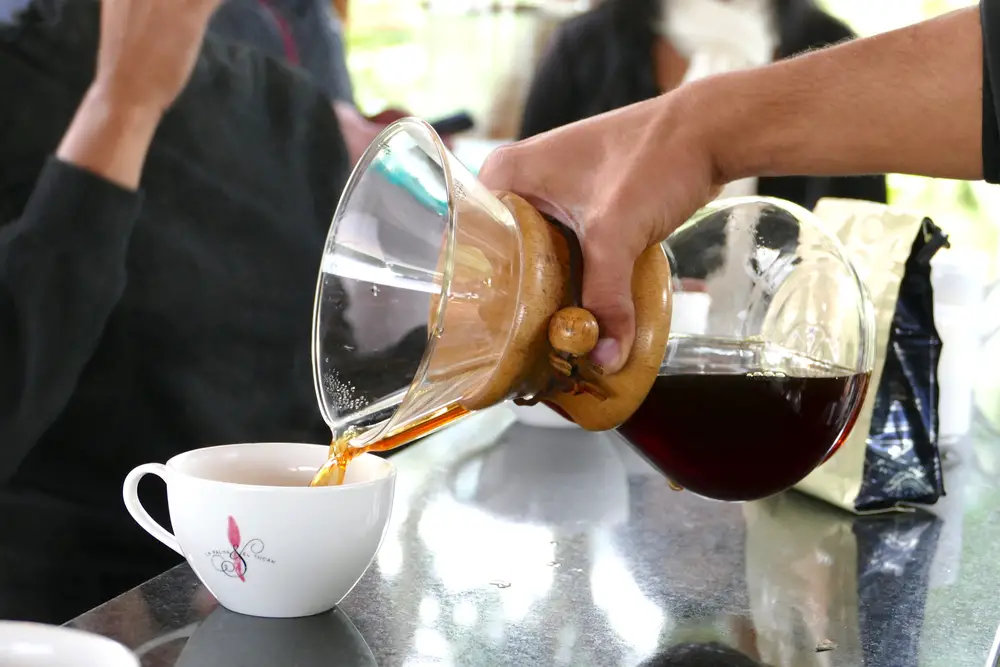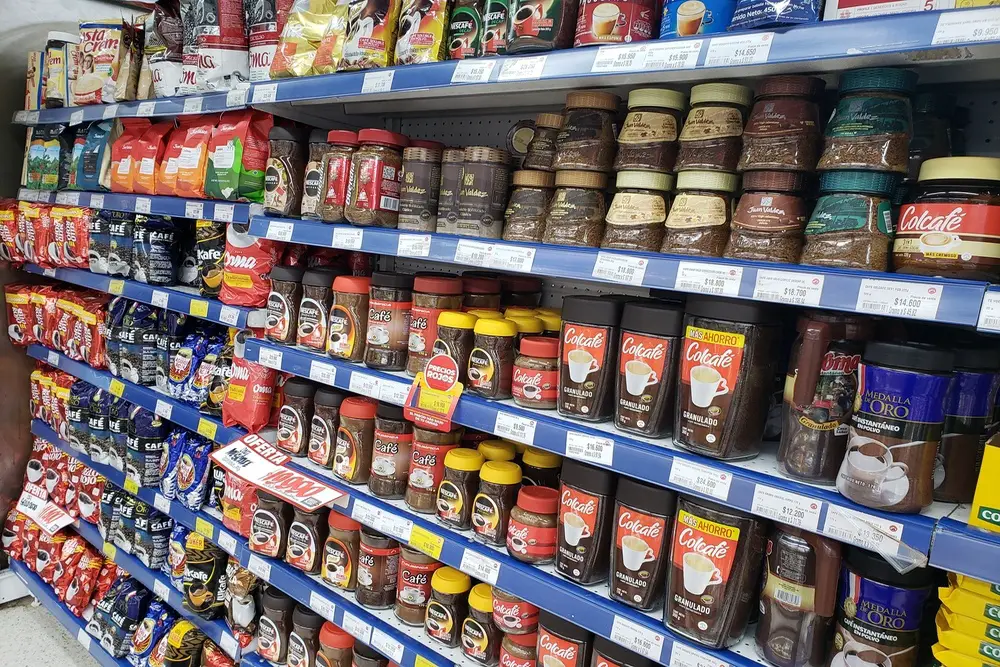Coffee experts disagree as to whether Sumatran coffee is exotic and a treat in its own right because of its distinctive taste, or just plain bad coffee.
So, you will have a hard time finding someone who can give you a more or less unbiased opinion on the subject.
Table of Contents
What is Sumatran coffee?
Sumatran coffee is a blend characterized by an earthy, mossy flavor with a hint of spiciness.
Some people love it precisely for the intense, earthy texture that results from this coffee’s blend.
On the other hand, there are those who despise it and prefer coffee blends from Africa or Central and South America.
Where does Sumatra coffee come from?
Sumatra is one of the two main islands of Indonesia, the fourth largest coffee producer in the world.
Sumatran coffee is usually harvested on the Sunda Islands, a group of islands in the Malay Archipelago.
These islands also lie in the Green Coffee Belt, the geographic area where the coffee plant (the coffee tree) thrives best.
Thus, the islands of Sunda are divided into 2 main regions: The Greater Sunda and the Lesser Sunda.
The Great Sunda
This geographic expanse is made up of large islands that include Sumatra.
In addition, other islands such as Java, Sulawesi and Borneo also belong to this group.
The Little Sunda
The smaller islands are located between Southeast Asia and Northern Oceania, more precisely in the part bordering Northern Australia.
Although Indonesia has 17,508 islands, 6,000 of which are inhabited, Sumatra is one of the most important islands as coffee is the main crop there.
It is therefore to be expected that this will be one of the regions that is driving the Asian country’s economy the most.
Coffee cultivation in Indonesia
Both the larger and smaller islands are ideal terrain for growing Arabica coffee.
This is mainly due to the soil on islands like Sumatra, which are very fertile due to their volcanic nature.
The sediments come from the different volcanoes of the island. The two most active volcanoes in Sumatra are Marapi and Karinci.
In addition, the tropical climate with rainy and sunny periods allows the Arabica coffee tree to grow optimally all year round.
For this reason, Sumatra is considered one of the coffee paradises of Southeast Asia.
The most important facts about Sumatran coffee
- The special feature of Sumatra coffee is the fermentation of the beans, which gives it its typical spicy note.
- In addition, more than 90 percent of this coffee is produced by small farmers on farms of around one hectare.
- Starbucks is a major buyer of the Sumatran bean.
- Of course, this coffee is often used as part of a blend because, as mentioned earlier, its taste is not for everyone, especially given its low acidity.
Mandheling coffee
In general, coffee from Indonesia has a very distinct character and taste.
Anyone who has ever tasted Indonesian coffee knows that herbal and earthy notes are dominant.
However, the Sumatran coffee has a more intense and complex taste, good consistency, medium acidity and floral aroma with a hint of sweetness at the end.
There are several types of coffee from Sumatra, the most famous of which is Mandheling.
And this coffee is named after the Mandailing people (a word that was mistranslated and hence spelled Mandheling), who traditionally grew and processed coffee beans in the Tapanuli region.
It is also worth mentioning that the women of the Mandheling people are responsible for most of the planting, cultivation, harvesting and transportation of the coffee.
As a result, many people unaccustomed to the classic Southeast Asian flavor of coffee find it downright ghastly.
On the other hand, if you prefer a stronger coffee with less sweetness, you will probably be satisfied with this coffee.
History of Mandheling
The origin of Mandheling coffee dates back to the colonial days of Indonesia when the country was under Dutch rule.
Back then, the coffee plantations were based on a forced cultivation system introduced by the Dutch East India government.
So, the Dutch, who stayed mostly on the island of Java (the main island of Indonesia), decided to plant Java coffee seeds on the island of Sumatra, finding the climate ideal for growing coffee.
Also, by that time, many of the plantations in Java were already infested with coffee rust, a fungal disease that would wipe out coffee production in the Asian country a few years later.
It is known that thanks to the government of the Dutch East Indies, the coffee spread to several areas in North Sumatra where it escaped the disease.
Over the decades, coffee production passed into Indonesian hands and since then the cultivation technique has also been perfected.
Processing of Mandheling coffee
Coffee connoisseurs say that Mandheling coffee’s distinctive flavor is due to processing, which involves a process known as “wet hulled” or “giling basah.”
A brief description of the method follows.
Harvest of coffee
One of the greatest characteristics of Sumatran coffee is that it is harvested exclusively by hand.
The farmers in Mandheling only pick the red coffee pods when they are fully ripe.
Sorting the coffee beans
After harvesting, the farmers place the beans in a container filled with water.
If the beans then float, the coffee is defective because they have probably been infested with a pest and therefore weigh less.
However, when the beans sink, they are fit and are separated from the unusable beans.
Extraction or removal of the beans
After the beans have been selected, they are grouped together to remove the skin and pulp in a pulper or shelling machine.
This is where the process known as Giling Basah begins, which involves removing the parchment and then grinding the beans.
It is worth remembering that parchment is the product made by washing the fruits of the coffee plant and removing all the outer layers before drying.
Therefore, before roasting, the green coffee bean needs to have a moisture content of around 10%.
However, freshly harvested coffee has a moisture content of around 50% and therefore needs to be dried.
With the Giling Basah, the drying process (see below) can be done much more quickly because the lower the amount of parchment, the lower the moisture content.
Fermentation of grains
For this step, the grains must be placed in a container filled with water.
The aim is that the viscous substance, which is called “moco” or “pergamino” and still adheres to the coffee’s rind, can be easily detached.
This process takes between 24 and 36 hours on average.
Dry
In this phase, the coffee beans are dried in the sun or with the most modern machines, depending on the producer.
This process is done in stages to reduce the moisture content of the beans by about 10-12%.
Storage
When the coffee beans are ready, they are placed in a cool place, protected from sunlight, for a couple of hours.
Characteristics of Mandheling coffee
Although controversial, Mandheling coffee is known for its good quality.
Its producers claim that the fact that it is grown in the Bukit Barisan mountains at 1500 meters above sea level on volcanic soil guarantees the coffee’s unique taste and that there is no other coffee like it.
According to several experts, Mandheling coffee is among the top five coffees in Indonesia and the top ten in the world.
However, this coffee is not as well known outside of Indonesia, with the exception of the United States, its main importer.
Profile of the Mandheling Coffee
Mandheling coffee can be 100% Arabica coffee or a blend of Arabica and other varieties, e.g. B. Liberica coffee (also of Indonesian origin) or Robusta coffee.
Therefore, there may be slight variations in taste, but in general this coffee has a sour taste and a pronounced aroma.
What sets it apart from all other Indonesian coffees is its low acidity, which is not common in Arabica coffee.
In addition, this coffee has other special features compared to other Indonesian coffees, such as a “thicker” consistency and a slightly sweeter taste.
Therefore, lovers of this coffee describe it as a drink that balances sweet and sour tastes very well.
Technically, the Mandheling could be said to be a full-bodied, medium-acid coffee with earthy notes of chocolate and walnut.
In addition, the fermentation process of the beans gives it a unique spicy taste.
Mandheling is also characterized by the fact that the beans are roasted dark or medium-dark to bring out the sweetness of the coffee and its earthy characteristics.
Aroma of Mandheling coffee
The aroma of Mandheling coffee comes from a blend of flowers, fruits and natural herbs impregnated during the processing of the beans.
But why is Mandheling coffee low in acidity?
Mandeling coffee’s low acidity is due to its being grown at low altitudes.
Additionally, some roasters “artificially” reduce acidity by adding stomach-soothing powder that doesn’t affect the final flavor.
Mandheling coffee’s low acidity is similar to some coffee blends from countries like Brazil, Guatemala, Peru and Mexico, to give you an idea.
Preparing Mandheling coffee
Mandheling is often prepared cold as the main ingredient in some specialty coffees, although it is also ideal hot and retains its aroma largely for its strong flavor and when milk or cream is added.
For best results, several baristas recommend a medium grind, not too fine and not too coarse, especially if you want to prepare it in a coffee maker.
However, it is advisable to buy this coffee already ground, as it seems that a good grind makes a difference when the coffee is served.
Also, it would be ideal to use a fine mesh filter instead of a paper filter so that the oils in the coffee that give the drink its special flavor are retained.
Sometimes the oils don’t make it through the paper filters. However, if you only have these filters, it doesn’t pose much of a problem.
In short, this coffee is a “Love it or hate it” coffee, so we cannot guarantee that you will like it. But if you try it, you will surely have a unique experience.



